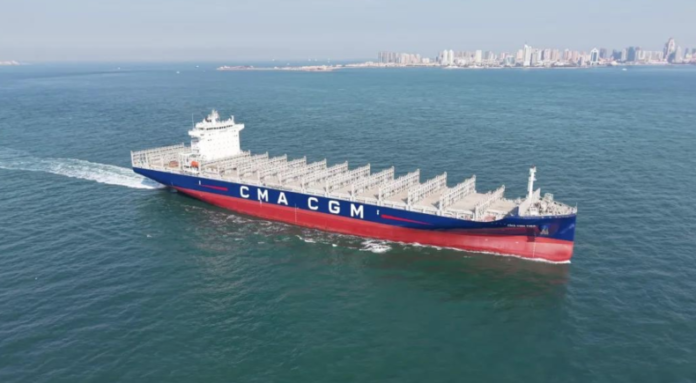Bureau Veritas Marine & Offshore (BV) has successfully delivered CMA CGM Tiga, the last of ten 5,500 TEU container ships built for CMA CGM at CSSC Qingdao Beihai Shipbuilding.
This marks the completion of a major project for which BV provided classification services and Bureau Veritas Solutions M&O provided advisory services, helping to ensure compliance with international safety, structural integrity and environmental protection requirements as well as maximizing performance.
CMA CGM Tiga, a new-generation, medium-sized container ship, was designed by CSSC Qingdao Beihai Shipbuilding in collaboration with Shanghai Ship Research & Design Institute (SDARI).
With a length of 255.5 meters, a width of 40.0 meters, and a deadweight tonnage of 73,025.91 tons, the vessel incorporates advanced technologies such as the world’s first WinGD7X82-2.0 main engine, along with Selective Catalytic Reduction (SCR) and Alternate Maritime Power (AMP) systems, significantly reducing sulfur oxide (SOx) and nitrogen oxide (NOx) emissions.
Providing classification services, BV worked closely with CMA CGM, CSSC Qingdao Beihai Shipbuilding, China Shipbuilding Trading Co., Ltd. (CSTC), and the engine manufacturer to help support the success of the series with design support, including plan approval to BV classification rules, statutory requirements and survey under construction services.
BVS advisory services expertise has successfully supported the optimization of each ship’s energy efficiency and performance. The series has achieved an Energy Efficiency Design Index (EEDI) 53.6% below the baseline, surpassing IMO Phase III standards for environmental performance. BVS contributed to the series’ design and operational efficiency, providing advisory services, also including springing vibration analysis in a global finite element model and reducing design cycles, while helping support structural integrity and helping ensure timely steel procurement.
In addition, BV also conducted full-process precision monitoring to ensure that the vessels met the required standards. This included successfully passing container hold tests and ensuring compliance with hull welding quality standards. Safety features such as the Fuel Oil Rapid Recovery System (FORS) notation and an insulation fault alarm and positioning system for low-voltage refrigerated container circuits were also incorporated, further enhancing the vessels’ operational safety and efficiency. The FORS notation ensures swift fuel recovery from tanks in emergencies. Crucially, elastic deformation of large hull structures was factored into shaft alignment calculations to prevent propeller shaft and bearing wear.







